Should You Surf After It Rains?
Investigating one of surfing’s most common — and frustrating — quandaries.
California has finally exited its “extreme drought,” courtesy of January’s La Niña altering rainfall armageddon. As you may well know, if you spend your free time standing on plastic water-sleds, the waves were also really good.
It’s not a new dilemma, deciding whether to brave a sewage riddled lineup in hopes of finding a few tubes, but it’s an important one.
We know that rain can’t quench Earth’s greenery without toxic runoff polluting the oceans. It’s a story as old as most water sanitation facilities. Yet each time heavy rainfall comes, the usual slew of questions pops up in coveted internet forums and sacred pre-surf parking lot chats.
If you’ve ever googled:
‘Will I actually get sick if I surf after it rains?’, ‘How much infectious grub perched in Malibu’s lineup is too much?’ or ‘Will I leave the beach with a shiny new sinus infection after groveling through contaminated breaks?’
…then you’re probably an addict. There’s no shame in it, and we have (most of) the answers.
We’ve all seen government advisories warning us to avoid the ocean anywhere from 24 hours to 72 hours after rainfall. But why? And is it worth missing a session with the hardened old boys at your local?
In reality, it’s a global issue that stormwater runoff from heavy rainfall poses severe health risks.
That’s because city sanitation facilities are ill-equipped to handle heavy rainfall. When severe rain hits, infrastructure is overrun. Instead of getting treated, significant amounts of waste end up mixed with rainwater, which flushes delicacies like fecal matter, septic sewage, and agriculture runoff directly into our aquatic playground.
“I think a lot of people think their government is managing those pollutants and toxins, but stuff sitting in the watershed is just getting emptied right out into your local break”, says Laura Walsh of the Surfrider Foundation.
To get an idea, one study from UC Irvine reported that after rainfall in Southern California, fecal indicator bacteria concentrations were 500% higher than bathing water quality standards.
Surfing after wet weather means a meet-and-greet with the flushed-down byproducts of all your city’s inhabitants. When you enter the ocean after heavy rain, you mingle with infectious E. coli, protozoa, amoeba, and other harmful pathogens.
What are the risks of contracting one of these pathogens? It’s difficult to give a definitive answer. One study by the EPA estimates an illness rate of 32 out of 1,000 people. Another study done in collaboration with the Surfrider Foundation, The Surfer Health Study, found an illness rate of 12 per 1,000 surfers.
Truthfully, if you’re a gambling man like Mikey C… those are pretty good odds. Though the consequences are significantly higher than $20 and a bruised ego.
One of the most common illnesses surfers risk receiving is gastroenteritis, a scientific term for the stomach flu that brings on symptoms like nausea, vomiting, and diarrhea. Algal blooms predominantly caused by agricultural runoff expose you to cyanotoxins. These bring on a host of similar symptoms as well as a sore throat, skin rashes, and kidney or liver damage. Other illnesses include dermatitis, sinusitis, nose and throat infections, and the holy grail — hepatitis.
It’s crucial to avoid paddling out with open wounds that leave you vulnerable to more severe and long-term effects like deep tissue and blood infections (unless it’s the day of the year, in which case you still shouldn’t, but we don’t blame you if you do.)
After wet weather, it’s a waiting game before it’s completely safe to surf. In Australia, the NSW Office of Environment and Heritage recommends avoiding beaches for 24 hours after rainfall and 72 hours at beaches near river mouths. In America, the Department of Environmental Health advises avoiding contact for 72 hours.
Why wait the whole period health officials recommend when waves are firing and look more tempting than ever? That’s because bacteria initially concentrate in high quantities near the coast where it was first dispersed. The Surf Health Study showed that the risk of infection is highest during and immediately after the rain and lessens in the following 72 hours.
“The 72-hour period is a good rule of thumb for people who aren’t aware that you’re swimming in this toxic cocktail of road, agriculture, and urban pollution that’s going straight into the coastline,” says Laura Walsh.
If you’re still considering taking your chances with dicey illnesses for the sake of surfing, at least now you know your odds and the consequences. In most places, it’s possible to check ocean water quality after heavy rainfall to understand your exposure.
And, if you do go surfing, don’t gargle the water. You might just return home with an illness that keeps you out of the ocean for even longer than any health advisory warning.


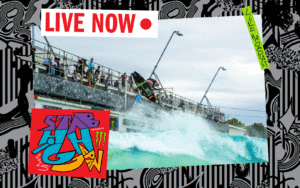
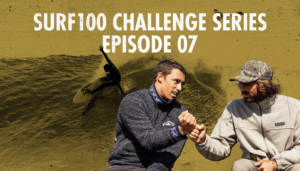
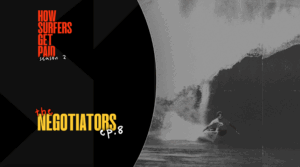
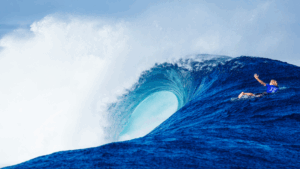
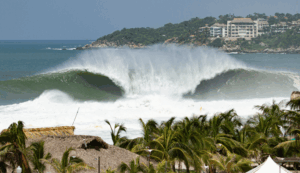







Comments
Comments are a Stab Premium feature. Gotta join to talk shop.
Already a member? Sign In
Want to join? Sign Up